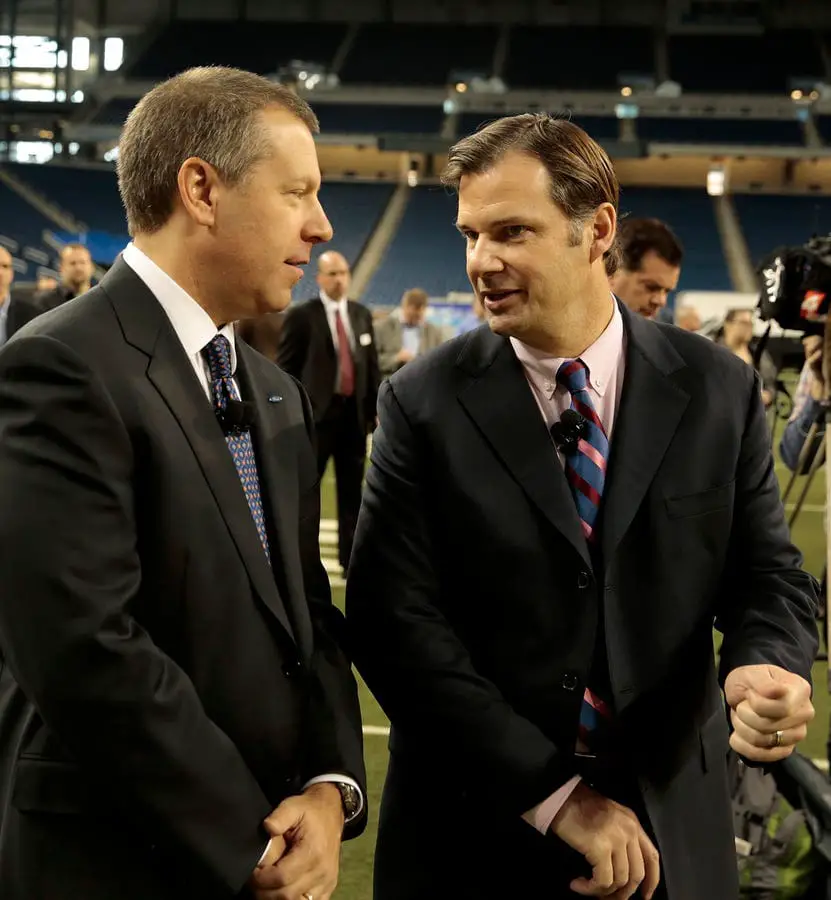In this article, you will explore the fascinating journey of evaluating Ford’s CEO succession and the key leaders who have shaped the company throughout its history. From visionary pioneers to transformative innovators, you will uncover the pivotal figures who have contributed to Ford’s success and navigate the timeline of leadership transitions that have positioned the company as an industry leader. Join us as we delve into the rich tapestry of Ford’s CEO succession, celebrating the individuals who have steered the company towards greatness.
Key Leaders in Ford’s CEO Succession
Ford Motor Company, a leading automobile manufacturer, has witnessed a series of key leaders in its CEO succession over the years. Each leader has played a significant role in shaping the company’s direction and success. In this article, we will delve into the leadership styles, achievements, challenges faced, and impact on Ford’s succession planning of four key leaders: Alan Mulally, Mark Fields, Jim Hackett, and Jim Farley. By examining their contributions and the factors influencing their succession, we can gain valuable insights into the importance of leadership continuity and strategic vision for the future success of Ford.
Alan Mulally (2006-2014)
Introduction
Alan Mulally’s tenure as the CEO of Ford from 2006 to 2014 marked a transformative period for the company. With his extensive background in the aerospace industry, Mulally brought a fresh perspective and an innovative approach to Ford.
Background and Early Career
Before joining Ford, Mulally had a successful career at Boeing, where he held various leadership positions. His experience in leading large-scale projects and managing complex organizations provided him with a strong foundation for his role at Ford.
Leadership Style
Mulally’s leadership style was characterized by his ability to foster a collaborative and inclusive culture. He believed in creating an open environment where employees could openly share their ideas and concerns. Through his “One Ford” initiative, Mulally encouraged teamwork and aligned the company’s goals and strategies.
Key Achievements
Under Mulally’s leadership, Ford implemented a series of strategic initiatives that revitalized the company. One of his key accomplishments was the successful turnaround of Ford’s financial performance. Mulally’s focus on operational excellence, along with a strong emphasis on quality and innovation, enabled Ford to regain market share and profitability.
Challenges Faced
During his tenure, Mulally faced significant challenges in navigating the global economic crisis and the decline in the automotive industry. Ford was at the brink of bankruptcy, and Mulally had to make tough decisions, including restructuring the company and securing loans to fund its operations. However, Mulally’s leadership and strategic actions helped Ford weather the storm and emerge stronger than ever.
Impact on Ford’s Succession Planning
Mulally’s leadership and success at Ford set a high standard for future CEOs. His emphasis on collaboration, operational excellence, and innovation became embedded in Ford’s culture and influenced the company’s succession planning. Mulally’s tenure paved the way for future leaders to build upon his legacy and continue driving Ford’s success.

This image is property of imageio.forbes.com.
Mark Fields (2014-2017)
Introduction
Mark Fields took over the reins from Alan Mulally as Ford’s CEO in 2014. As a long-time Ford executive, Fields was well-acquainted with the company’s operations and had a deep understanding of the automotive industry.
Background and Early Career
Fields had a distinguished career at Ford, holding various leadership positions in both the U.S. and international markets. His experience in sales, marketing, and product development provided him with valuable insights into the challenges and opportunities faced by the company.
Leadership Style
Fields’ leadership style was characterized by his focus on speed, agility, and results. He believed in making quick decisions and executing them efficiently. Fields also emphasized the importance of customer satisfaction and worked towards enhancing Ford’s brand image through innovative marketing strategies.
Key Achievements
During his tenure, Fields focused on expanding Ford’s global presence and accelerating its growth. He spearheaded initiatives to introduce new vehicle models, particularly in the SUV and electric vehicle segments. Under his leadership, Ford also made significant investments in autonomous and electric vehicle technologies, positioning the company for future success.
Challenges Faced
Fields faced numerous challenges during his tenure, including the need to address quality issues, improve profitability, and navigate the complexities of the global market. The shift in consumer preferences towards SUVs and trucks, combined with increasing competition, posed additional challenges for Fields and his team.
Reasons for Departure
Despite his efforts to position Ford for future success, Fields faced criticism for the company’s lackluster stock performance and perceived slow response to changing market dynamics. Ultimately, disagreements with the board of directors regarding the company’s direction led to Fields’ departure in 2017.
Jim Hackett (2017-2020)
Introduction
Jim Hackett assumed the position of CEO at Ford in 2017, succeeding Mark Fields. With a background in business management and a reputation for leading successful turnarounds, Hackett brought a different perspective and strategic vision to Ford.
Background and Early Career
Before joining Ford, Hackett served as the CEO of Steelcase, a leading office furniture manufacturer. During his tenure, he successfully transformed the company’s operations and positioned it for long-term growth. Hackett’s expertise in organizational transformation and design thinking played a crucial role in his approach as CEO of Ford.
Leadership Style
Hackett’s leadership style was characterized by his emphasis on teamwork, transparency, and innovation. He believed in empowering employees to tackle challenges collaboratively and encouraged open communication at all levels of the organization. Hackett also championed the use of design thinking to drive customer-centric innovation and reshape Ford’s strategy.
Key Achievements
Hackett’s tenure at Ford was marked by a focus on reshaping the company’s strategy for the future. He initiated efforts to streamline Ford’s operations, invested in future mobility solutions, and prioritized the development of electric and autonomous vehicles. Hackett’s leadership played a crucial role in Ford’s expansion into new areas of business, including mobility services and smart vehicles.
Challenges Faced
During his tenure, Hackett faced challenges related to the rapid changes in the automotive industry. Ford had to adapt to the rise of electric vehicles, autonomous driving, and changing consumer expectations. Hackett also had to steer the company through trade disputes, economic uncertainties, and the COVID-19 pandemic, all of which presented unique challenges for Ford and the automotive industry as a whole.
Reshaping Ford’s Strategy
Under Hackett’s leadership, Ford launched the “Ford+” plan, which aimed to transform the company into a broader mobility and technology-driven organization. The plan included investments in electric and autonomous vehicles, the expansion of connected services, and the optimization of Ford’s manufacturing processes. Hackett’s strategic vision laid the foundation for Ford’s future growth and success.
Succession Planning under Hackett
Hackett played an instrumental role in reshaping Ford’s succession planning processes. He leveraged his design thinking approach to identify and develop future leaders within the organization. By fostering a culture of innovation and continuous learning, Hackett laid the groundwork for a robust leadership pipeline that would ensure Ford’s success in the long term.

This image is property of www.detroitnews.com.
Jim Farley (2020-present)
Introduction
Jim Farley assumed the position of CEO at Ford in 2020, succeeding Jim Hackett. With a diverse background in various roles within the automotive industry, Farley brought a wealth of experience and a deep understanding of Ford’s operations.
Background and Early Career
Farley had a successful career in the automotive industry, working at various companies before joining Ford. His experience in sales, marketing, and strategy provided him with valuable insights into the challenges and opportunities faced by the industry.
Leadership Style
Farley’s leadership style is characterized by his hands-on approach, strategic thinking, and a relentless focus on results. He emphasizes the importance of customer-centricity and believes in leveraging technology to enhance the overall automotive experience. Farley also recognizes the importance of building strong relationships with employees, customers, and partners to drive success.
Key Achievements
Since assuming the role of CEO, Farley has focused on accelerating Ford’s transformation and driving innovation. He has spearheaded initiatives to increase the company’s investments in electric and autonomous vehicles, expand its presence in emerging markets, and enhance the overall customer experience. Through strategic partnerships and collaborations, Farley aims to position Ford as a leader in the future of mobility.
Challenges Faced
Farley faces several challenges in his role as CEO, including the need to address supply chain disruptions, navigate changing consumer preferences, and adapt to regulatory changes. The transition towards electric and autonomous vehicles also presents unique challenges for Farley and his team, as they work to ensure a smooth and successful transformation for Ford.
Future Outlook
Under Farley’s leadership, Ford is poised for continued growth and success. His strategic vision, focus on innovation, and commitment to customer satisfaction position Ford well for the future. As the automotive industry evolves, Farley’s leadership will undoubtedly play a crucial role in guiding Ford through the challenges and opportunities that lie ahead.
Impact on Ford’s Succession Planning
Farley’s leadership and emphasis on innovation and future mobility solutions will further shape Ford’s succession planning. By nurturing a culture of continuous learning and developing future leaders who share his strategic vision, Farley ensures that Ford will have a strong leadership pipeline to drive the company’s success in the long term.
Comparison of Key Leaders
Leadership Styles
When comparing the leadership styles of the four key leaders at Ford, it becomes evident that each brought their unique approach to the role. Mulally’s collaborative and inclusive style fostered teamwork and aligning goals across the organization. Fields’ focus on speed and agility prioritized quick decision-making and execution. Hackett’s emphasis on innovation and design thinking drove customer-centric transformation. Farley’s hands-on and results-oriented style positions Ford for future success.
Focus on Innovation and Technology
All four leaders recognized the importance of innovation and technology in driving Ford’s success. Mulally introduced a new generation of fuel-efficient vehicles and advanced technology systems. Fields accelerated Ford’s investments in autonomous and electric vehicles. Hackett reshaped Ford’s strategy to focus on mobility solutions and connected services. Farley continues to drive innovation and technology advancements to position Ford as a leader in the future of mobility.
Approach to Global Markets
Expanding Ford’s global presence was a priority for all four leaders. Mulally globalized the company’s operations and established partnerships in emerging markets. Fields focused on strengthening Ford’s position in key markets, particularly China. Hackett initiated efforts to optimize Ford’s global manufacturing footprint and expand into new areas of business. Farley aims to enhance Ford’s presence in emerging markets through strategic partnerships and collaborations.
Strategic Vision
Each leader brought their strategic vision for Ford’s future. Mulally’s focus was on operational excellence, quality, and innovation. Fields aimed to enhance Ford’s product lineup and position the company as a mobility provider. Hackett emphasized connected services, electric vehicles, and autonomous driving. Farley’s vision centers around prioritizing electric vehicle investments, expanding into new areas of business, and delivering exceptional customer experiences.
Financial Performance
While each leader faced unique economic challenges during their tenure, all made significant contributions to Ford’s financial performance. Under Mulally’s leadership, Ford returned to profitability. Fields focused on improving Ford’s profitability and cash flow. Hackett initiated cost-reduction efforts and increased investments in future mobility solutions. Farley’s strategic focus is on driving profitable growth and delivering long-term shareholder value.
Employee Relations and Engagement
Building strong relationships with employees and fostering a culture of engagement was a common theme among the leaders. Mulally’s emphasis on teamwork and collaboration promoted employee engagement. Fields encouraged a culture of innovation and recognition. Hackett empowered employees to tackle challenges collaboratively and encouraged open communication. Farley recognizes the importance of building strong relationships and fostering a culture of trust and engagement among employees.
Succession Planning
Each leader’s tenure had a significant impact on Ford’s succession planning. Mulally’s emphasis on collaboration and operational excellence laid the groundwork for future leaders to build upon. Fields’ focus on innovation and growth initiatives influenced Ford’s approach to identifying and developing future leaders. Hackett’s design thinking approach and emphasis on continuous learning shaped Ford’s succession planning processes. Farley’s leadership and focus on innovation will undoubtedly further strengthen Ford’s leadership pipeline for the future.

This image is property of synergogy.com.
Factors Influencing CEO Succession
Performance and Results
The performance and results achieved by each leader played a crucial role in their succession at Ford. Mulally’s successful turnaround of the company’s financial performance boosted his reputation and laid the foundation for future leaders. Fields’ efforts to strengthen Ford’s position in key markets and drive growth initiatives were factors in his succession. Hackett’s focus on reshaping Ford’s strategy for the future and his success in expanding into new areas of business influenced his succession. Farley’s track record of driving growth, innovation, and profitability positioned him as the ideal leader for Ford’s future.
Industry and Market Conditions
The industry and market conditions at the time of each succession also influenced the choice of CEO. Mulally’s appointment coincided with the global economic crisis and the decline in the automotive industry, making his turnaround expertise invaluable. Fields assumed leadership during a period of recovery and growth for the industry, requiring a focus on innovation and market expansion. Hackett’s appointment came at a time of rapid transformation in the automotive industry, necessitating a strategic vision for the future. Farley’s succession occurred amidst increasing competition, changing consumer preferences, and the shift towards electric and autonomous vehicles.
Board of Directors’ Role
The board of directors plays a critical role in CEO succession. They assess the performance and suitability of potential candidates, considering factors such as leadership capabilities, strategic vision, and cultural fit. The board’s decision is influenced by the company’s long-term goals, shareholder expectations, and the need for continuity and stability.
Shareholder Influence
Shareholder influence can also impact CEO succession. Shareholders may voice their opinions and expectations regarding the desired qualities and qualifications of the next CEO. They may push for changes in leadership if they feel that the current CEO is not effectively driving shareholder value or aligning with their objectives.
Internal Talent Development
The development of internal talent is crucial for a successful CEO succession process. Ford has recognized the importance of cultivating leaders from within the organization and has implemented programs and initiatives to identify and nurture potential successors. This focus on internal talent development ensures a smooth transition and continuity in leadership.
External Talent Acquisition
In certain cases, external talent acquisition may be necessary to fill the CEO position. Ford has evaluated external candidates in the past, considering their industry knowledge, leadership experience, and fit with the company’s culture and strategic direction. External talent acquisition brings fresh perspectives and diverse experiences to the leadership team.
Lessons Learned from Ford’s CEO Succession
Importance of Leadership Continuity
The importance of leadership continuity cannot be understated. Each CEO’s tenure built upon the foundation laid by their predecessor, driving the company forward with a clear vision and strategic direction. Continuity in leadership facilitates long-term planning, ensures a smooth transition, and allows the new CEO to build upon the successes of their predecessor.
Balancing Stability and Innovation
Successful CEO successions require a delicate balance between stability and innovation. Leaders must maintain the core values and strengths of the organization while embracing change and driving innovation. Ford’s successive CEOs have demonstrated the ability to balance stability and innovation, ensuring the company’s sustained growth and success.
Adapting to Changing Market Dynamics
The automotive industry is constantly evolving, and successful CEO successions require leaders who can adapt to changing market dynamics. Ford’s CEOs have navigated economic crises, market fluctuations, and industry disruptions. By anticipating and responding to these challenges, they have positioned Ford for long-term success.
Strategic Vision for Future Success
A strong strategic vision is instrumental in driving a company’s success. Ford’s CEOs have consistently demonstrated their ability to envision a future for the company and take the necessary steps to turn that vision into reality. Their strategic focus on innovation, technology, and global growth has positioned Ford as a leader in the automotive industry.

This image is property of assets-global.website-files.com.
Conclusion
The CEO succession journey of Ford Motor Company has been marked by key leaders who have left a lasting impact on the company’s success. From Alan Mulally’s transformational leadership to Jim Farley’s focus on innovation and growth, each CEO has brought their unique vision and strategy to position Ford for the future. Through their accomplishments and challenges faced, Ford has learned valuable lessons about leadership continuity, balancing stability and innovation, adapting to changing market dynamics, and the importance of a strategic vision. As the automotive industry continues to evolve, Ford’s CEO succession will remain a critical element in shaping the company’s future success.


